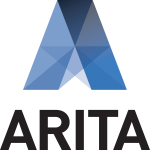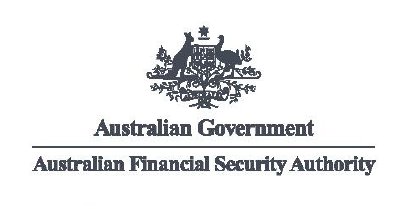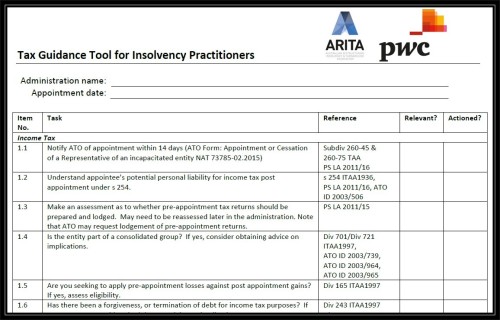Schedule provision
|
Current Bankruptcy Act provision
|
Comment
|
|
10-5: Inspector-General (IG) must work cooperatively with Australian Securities and Investment Commission (ASIC) in performing functions and exercising powers
|
No equivalent
|
Requirement for the IG to work cooperatively with ASIC applies in relation to persons who are, have been or may become both registered trustees under the Bankruptcy Act and registered liquidators under the Corporations Act.
|
|
15-1: IG must establish a register of trustees
|
No direct equivalent
– some trustee information is currently entered on the National Personal Insolvency Index (NPII)
|
The register will contain information relating to the trustee’s registration, as well as contact details and certain disciplinary action taken against trustees. The information on the register will be publicly available.
|
|
20-5: Application to IG for registration as a trustee
|
154A
|
An application must be in the approved form and accompanied by the application fee.
|
|
20-10: IG may convene committee to consider registration application
|
155
|
The committee to consist of the IG; a registered trustee chosen by a prescribed body; and a person appointed by the Minister. The ‘prescribed body’ is the Australian Restructuring Insolvency & Turnaround Association (ARITA).
|
|
20-15: IG must refer applications to the committee
|
No equivalent – 155 assumes referral of applications
|
The IG must refer an application within two months of receiving it.
|
|
20-20: Committee to consider applications
|
155A
|
The committee must decide within 45 business days of interviewing an applicant whether he/she should be registered.
|
|
20-25: Committee to report
|
155A(6)
|
A report must be given to the applicant and the IG.
|
|
20-30: Registration as a trustee
|
155B and 155C
|
The IG must register an applicant if the committee recommends it and if the applicant has produced evidence in writing that he/she has taken out adequate and appropriate professional indemnity and fidelity insurance, and has paid the registration fee. Registration has effect for three years, and the IG must give the trustee a certificate of registration (may be given electronically).
|
|
20-35: Insolvency Practice Rules (IPRs)4 may impose conditions on all registered trustees or on specified class of trustee
|
No equivalent
|
Provides for imposition of industry-wide conditions, or conditions limiting the kinds of activity in which a trustee may engage.
Conditions include undertaking at least 40 hours of continuing professional education each year (10 hours of which must be capable of being objectively verified by an competent source) and maintaining adequate professional indemnity and fidelity insurance during any period of suspension of registration in relation to work carried out prior to the suspension taking effect. (see IPR 20-5)
|
|
20-40: Application to IG to vary or remove condition on registration
|
155E(1) to (3)
|
An application must be made in the approved form, but cannot be made if the trustee’s registration is suspended; if the condition is of a prescribed kind; or in prescribed circumstances.
|
|
20-45: IG may convene committee to consider application to vary or remove condition
|
155E(4) & (5)
|
The committee to consist of the IG; a registered trustee chosen by a prescribed body, and a person appointed by the Minister. The ‘prescribed body’ is ARITA.
|
|
20-50: IG must refer application to the committee
|
No equivalent – 155E assumes referral of applications
|
The IG must refer an application within two months of receiving it.
|
|
20-55: Committee to consider application
|
155E(6) & 155F(1)
|
The committee must interview an applicant unless the applicant agrees otherwise, and within 20 business days thereafter decide whether the condition should be varied or removed.
|
|
20-60: Committee to report
|
155F(2)
|
A report is to be given to the applicant and the IG.
|
|
20-65: Committee’s decision given effect
|
155F(4)
|
If the committee recommends removal or variation of condition, the condition is removed or varied in accordance with the decision.
|
|
20-70: Application for renewal of registration
|
155D(2) & (3)
|
Applications for renewal under 20-70 must be made in the approved form.
|
|
20-75: Renewal
|
155D(1)
|
The IG shall give a trustee a certificate of registration upon renewal.
|
|
20-80: False representation that a person is a registered trustee
|
No equivalent
|
A new offence that carries a maximum penalty of 30 penalty units (1 penalty unit = $180).
|
|
25-1: Registered trustees to maintain adequate insurance
|
No equivalent, however undertaking to maintain adequate insurance is a requirement for registration and failure to do so can be grounds for the IG to issue a ‘show cause’ notice
|
New offences introduced for failing to maintain adequate professional indemnity and fidelity insurance. Maximum penalty of 1,000 penalty units (for false or reckless failure); or 60 penalty units (for failure in other circumstances – e.g. inadvertent failure). The IG may, by legislative instrument, determine what constitutes adequate insurance.
• No legislative instrument is currently proposed. Requirements relating to insurance will be outlined in Inspector-General Practice Statement (IGPS) 13
|
|
30-1: Annual trustee return
|
No equivalent
|
A new requirement for trustees to lodge annual return in the approved form, including evidence that adequate insurance has been maintained. The return must be lodged annually within one month of the anniversary of the date of a trustee’s registration. Maximum penalty for failure to lodge, 5 penalty units.
|
|
35-1: Notice of significant events to IG
|
161A
|
Introduction of new notifiable events that include:
• being issued with a bankruptcy notice
• disqualification from managing a corporation
• ceasing to have adequate insurance
• being issued a ‘show cause’ notice in relation to registration as a liquidator, or having registration as a liquidator suspended or cancelled.
The notice must be filed in the approved form within five business days after the trustee could reasonably be expected to be aware that the event has occurred. Maximum penalty for failure to notify is 100 penalty units.
|
|
35-5: Notification of other events to IG
|
No equivalent
|
Introduction of an obligation to notify in the approved form if information in the annual trustee return or annual administration return is, or becomes, inaccurate in a material particular, and any other events prescribed (in the IPRs). The notice must be lodged within 10 business days after the trustee could reasonably be expected to be aware that the event has occurred. Maximum penalty for failure to notify is 5 penalty units.
|
|
40-5: Registered trustee to remedy failure to lodge documents or give
information or documents
|
No equivalent
|
The IG may direct a trustee in writing to comply with the requirement to lodge any document or give any information or document required to be given to a person under the Act or to be lodged with the IG. If a trustee fails to comply, the IG can direct the trustee not to accept further appointments and/or apply to the court for an order for compliance.
|
|
40-10: Registered trustee to correct inaccuracies etc.
|
No equivalent
|
If the IG suspects information provided by a trustee is incomplete or incorrect, the IG can direct the trustee in writing to confirm information is complete or correct, or to provide complete or correct information and/or notify persons of the addition or correction. If a trustee fails to comply, the IG can direct the trustee not to accept further appointments and/or apply to the court for an order for compliance.
|
|
40-15: Direction not to accept further appointments
|
No equivalent
|
The IG may direct a trustee in writing not to accept further appointments if:
• the trustee has failed to comply with a direction under 40-5 or 40-10
• a committee convened to consider the trustee’s ongoing registration decides the IG should give the direction
• the trustee has failed to comply with a direction under 7070 (to give information to debtor or creditors) or
• the trustee has failed to comply with a direction under 75-20(1) or (2) to convene a meeting of creditors
– note 70-70 and 75-20 commence on 1 September 2017.
When given, a direction not to accept further appointments becomes a condition on the trustee’s registration.
|
|
40-20: Automatic cancellation of registration
|
182
|
Cancellation of registration occurs on the death of a trustee or if he/she becomes an insolvent under administration.
|
|
40-25: IG may suspend registration
|
No equivalent
|
The IG may suspend a registration where the trustee:
• is disqualified from managing a corporation
• ceases to have adequate insurance
• has had his/her registration as a liquidator suspended or cancelled (other than on request)
• owes more than the prescribed amount of estate charges
• fails to comply with a court order to repay remuneration to an estate
• has been convicted of an offence involving fraud or dishonesty or
• requests the IG to suspend the registration.
|
|
40-30: IG may cancel registration
|
No direct equivalent (155G provides
a trustee may request the IG that registration cease)
|
The IG may cancel a registration where a trustee requests it, or in circumstances equivalent to those mentioned in relation to the suspension of a registration under 40-25 (except registration as a liquidator must be cancelled, not merely suspended).
|
|
40-35: Notice of suspension or cancellation
|
No equivalent
|
If the IG decides to suspend (under 40-25) or cancel (under 40-30) a trustee’s registration, the IG must give notice of the decision, along with reasons, to the trustee within 10 business days. The decision comes into effect the day after the notice is given. Failure to give the notice within 10 business days does not affect the validity of the decision.
|
|
40-40: IG may give a show- cause notice
|
155H(1)
|
A show-cause notice may be issued by the IG where the trustee:
• no longer has the requisite qualifications, experience, knowledge and abilities
• has committed an act of bankruptcy
• is disqualified from managing a corporation
• ceases to have adequate insurance
• has breached a condition of registration
• has breached a provision of the Bankruptcy Act
• has had his/her registration as a liquidator cancelled or suspended (other than on request)
• owes more than the prescribed amount of estate charges
• fails to comply with a court order to repay remuneration to an estate
• has been convicted of an offence involving fraud or dishonesty
• is permanently or temporarily unable to perform the functions of a trustee due to physical or mental incapacity
• fails to carry out adequately and properly the duties of a trustee
• fails to carry out adequately and properly the duties of the administrator of a debt agreement
• is not a fit and proper person
• is not resident in Australia or
• has failed to comply with a standard prescribed in the IPRs.
|
|
40-45: IG may convene a committee
|
155H(2) & (3)
|
The committee is to consist of the IG; a registered trustee chosen by a prescribed body, and a person appointed by the Minister. The ‘prescribed body’ is ARITA.
|
|
40-50: IG may refer matter to a committee
|
155H(2)
|
The IG may refer a matter to the committee if no explanation is received within 20 business days after a show-cause notice is given; or if not satisfied by the explanation.
|
|
40-55: Decision of the committee
|
155I(1), (2) & (3)
|
The committee can decide one or more of the following:
• the trustee continue to be registered
• the trustee’s registration be suspended or cancelled
• the IG direct the trustee not to accept further appointments
• the trustee be publicly admonished or reprimanded
• a condition be imposed on the trustee’s registration
• a condition be imposed on the registration of all other trustees that they not allow the trustee in question to exercise powers or perform functions on their behalf
• the IG publish specified information in relation to the committee’s decision.
|
|
40-60: Committee to report
|
155I(4)
|
A report must be given to the registered trustee and the IG.
|
|
40-65: IG must give effect to committee’s decision
|
155I(6)
|
The IG must give effect to the decision made by the committee.
|
|
40-70: Application to lift or shorten suspension
|
No equivalent
|
A trustee may lodge an application with the IG in the approved form to lift, or shorten the period of a suspension.
|
|
40-75: IG may convene a committee to consider applications
|
No equivalent
|
The committee is to consist of the IG; a registered trustee chosen by a prescribed body; and a person appointed by the Minister. The ‘prescribed body’ is ARITA.
|
|
40-80: IG must refer applications to a committee
|
No equivalent
|
The IG must refer an application within two months of receiving it.
|
|
40-85: Committee to consider applications
|
No equivalent
|
The committee must interview an applicant unless the applicant agrees otherwise, and within 10 business days thereafter, decide whether the suspension should be lifted or shortened.
|
|
40-90: Committee to report
|
No equivalent
|
A report must be given to the applicant and the IG.
|
|
40-95: Committee’s decision given effect
|
No equivalent
|
If the committee decides to lift or shorten the suspension, the suspension is lifted or shortened in accordance with that decision.
|
|
40-100: Notice by industry bodies of possible grounds for disciplinary action
|
No equivalent
|
An industry body may lodge with the IG a notice in the approved form stating that it reasonably suspects there are grounds for the IG to impose a condition on, or
suspend or cancel the registration of, a trustee, or issue a show-cause notice to the trustee. The IG must consider the information but is not bound to act on it.
|
|
40-105: No liability for notice given in good faith etc.
|
No equivalent
|
An industry body is not liable civilly, criminally or under any administrative process for a notice given in good faith and where the suspicion that is the subject of the notice is a reasonable suspicion. That protection extends to persons who give information to the industry body that is contained in a notice to the IG and to persons who make a decision as a result of which the industry body gives a notice.
|
|
40-110: Meaning of industry body
|
No equivalent
|
The IPRs may prescribe industry bodies–ARITA and the peak accounting and legal professional bodies are prescribed (see IPR 40-1).
|
|
45-1: Court oversight of registered trustees
|
No direct equivalent (some of the same subject matter is contained in 176 and
179. Other provisions of the ILRA also partially replicate 179
– e.g. 9015)
|
A Court may make such orders as it thinks fit in relation to a registered trustee, either on its own initiative, or on application by the IG or the trustee. In making orders the court may take into account:
• whether the trustee has faithfully performed his/her duties
• whether an action or failure to act by the trustee complies with the Act or IPRs, or the order of the court
• whether any person has suffered, or is likely to suffer, loss or damage as a result of the trustee’s act or failure to act
• the seriousness of the consequences of any act or failure to act by the trustee, including the effect on public confidence in registered trustees as a group.
|
|
45-5: Court may make orders about costs
|
No direct equivalent, but some overlap with 176
|
Without limiting 45-1, the Court may make orders in relation to a registered trustee that deal with the costs of a matter considered by the Court.
|
|
50-5: Prescribed body appointing a person to a committee
|
No equivalent
|
The IPRs may prescribe knowledge and experience requirements for members of a committee chosen by a prescribed body (at least 5 years’ experience as a registered trustee is prescribed – see IPR 50-15). The ‘prescribed body’ is ARITA.
|
|
50-10: Minister appointing a person to a committee
|
No equivalent
|
The Minister must be satisfied that a person is qualified by virtue of his or her knowledge of, or experience in, one or more of: business; law; economics; accounting; public policy relating to bankruptcy.
|
|
50-15: Single committee may consider more than one matter
|
No equivalent
|
A single committee may consider one or more of the following:
• matter(s) relating to one application for trustee registration
• matter(s) relating to more than one applicant for registration
• matter(s) relating to one or more registered trustees.
|
|
50-20: Ongoing consideration of matters by committee
|
No direct equivalent (but similar in some respects to the subject matter in Bankruptcy Regs 8.05G and 8.23)
|
The committee’s powers are not affected by a change in membership of the committee; the committee may adjourn consideration of a matter (and may do so more than once). A matter may be transferred to another committee.
|
|
50-25: Procedure and other rules relating to committees
|
No equivalent
|
The IPRs may provide for (see division 50 of the IPRs):
• the manner in which committees perform their functions including:
(i) meetings (ii) quorum requirements (iii) disclosure of interests and (iv) how questions are decided
• the reconstitution of a committee and
• the termination of consideration of a matter by a committee and the transfer of matters to another committee.
|
|
50-30: Remuneration of committee members
|
No equivalent
|
Committee members are entitled to receive remuneration as determined by the Remuneration Tribunal. If no Tribunal Determination is in place, the members are entitled to receive such remuneration as the Minister determines in writing.
|
|
50-35: Committee must only use information etc. for purposes for which disclosed
|
No equivalent
|
A committee member commits an offence if he/she uses or discloses information or a document that was disclosed to him/her for the purposes of serving on
the committee (50 penalty unit maximum penalty). Exceptions apply where the document or information is disclosed to: ASIC; other committees under this Part or the corresponding Part of the Insolvency Practice Schedule (Corporations); prescribed bodies; authorities in States, Territories or overseas exercising similar functions to the committee or the IG; or a court or tribunal.
|
|
96-1: Review by the Administrative Appeals Tribunal (AAT)
|
155A(7) – registration application
155F(3) – application to vary/remove condition
155I(5) – disciplinary action by committee
|
The following decisions are reviewable by the AAT:
• a committee decision under 20-20 (registration application)
• a committee decision under 20-55 (application to vary or remove condition on registration)
• IG decision under 40-15 (directing trustee not to accept further appointments)
• IG decision under 40-25 (suspending registration)
• IG decision under 40-35 (cancelling registration)
• Committee decision under 40-55 (disciplinary action by committee)
• Committee decision under 40-85 (application to lift or shorten a suspension).
|
|
105-1: The Insolvency Practice Rules
|
No equivalent
|
The Minister may, by legislative instrument, make rules providing for matters required or permitted by the Bankruptcy Act to be made by the Rules, or necessary or convenient to be provide for in order to carry out or give effect to the Act.
|

 A new professional association for Australian insolvency practitioners – named the Association of Independent Insolvency Practitioners (AIIP) – has been formed and is currently endeavouring to recruit as members those registered liquidators and trustees in bankruptcy who work as sole practitioners or in small firms.
A new professional association for Australian insolvency practitioners – named the Association of Independent Insolvency Practitioners (AIIP) – has been formed and is currently endeavouring to recruit as members those registered liquidators and trustees in bankruptcy who work as sole practitioners or in small firms.



